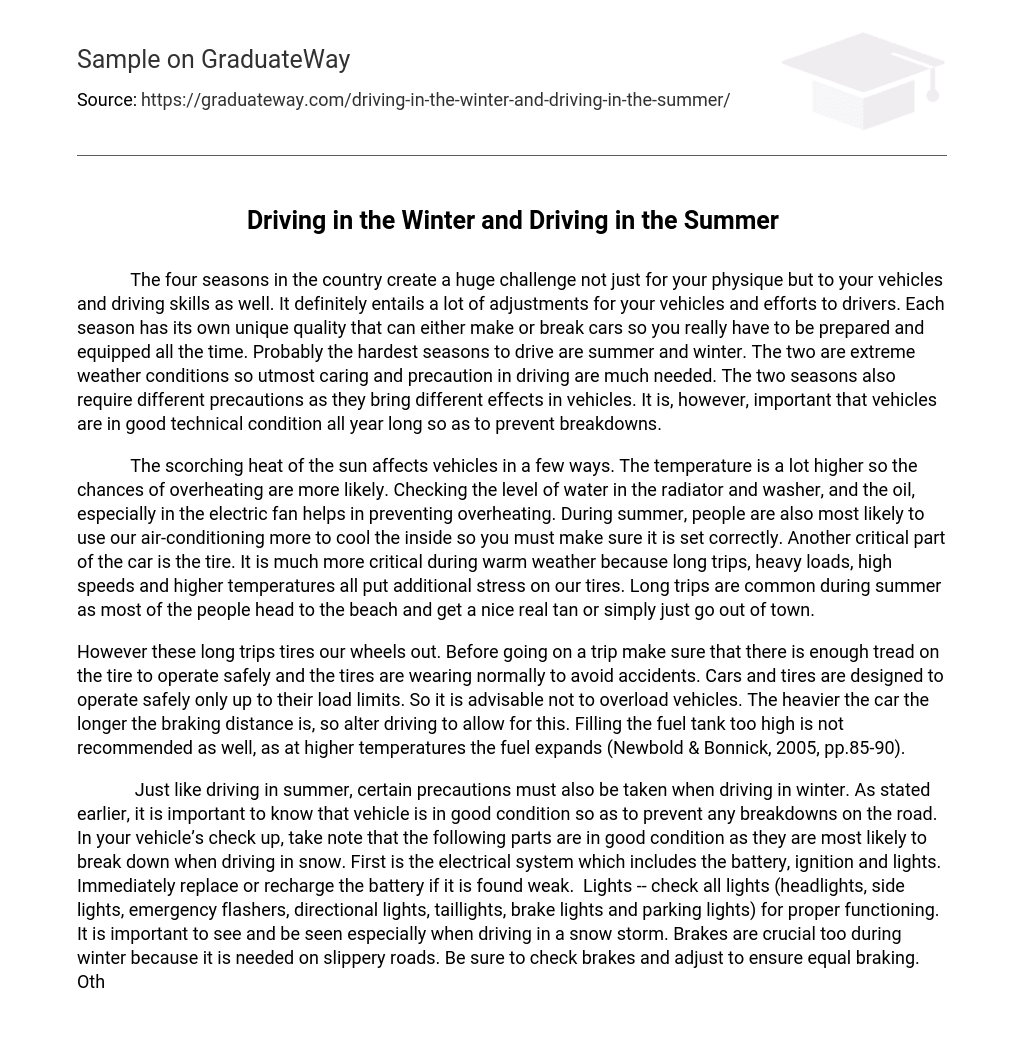The four seasons in the country create a huge challenge not only for your physique but also for your vehicles and driving skills. It entails a lot of adjustments for your vehicles and efforts from drivers. Each season has its own unique quality that can either make or break cars, so you must be prepared and equipped all the time.
Summer and winter are probably the hardest seasons to drive in because they are extreme weather conditions. Utmost care and precaution in driving are much needed during these two seasons. They also require different precautions as they bring different effects on vehicles. However, it is important that vehicles remain in good technical condition throughout the year to prevent breakdowns.
The scorching heat of the sun affects vehicles in several ways. The higher temperature increases the chances of overheating. To prevent this, it is important to check the water level in the radiator and washer, as well as the oil level, especially in the electric fan. During summer, people tend to use air conditioning more frequently to cool down their vehicles’ interiors; therefore, it is crucial to ensure that it is set correctly.
Another critical part of a car during warm weather is its tires. Long trips, heavy loads, high speeds and higher temperatures all put additional stress on them. As people often head to beaches or out-of-town destinations during summer for a nice real tan or just relaxation purposes.
However, these long trips tire our wheels out. Before going on a trip, make sure that there is enough tread on the tires to operate safely and that they are wearing normally to avoid accidents. Cars and tires are designed to operate safely only up to their load limits, so it is advisable not to overload vehicles. The heavier the car, the longer the braking distance will be, so adjust your driving accordingly. Additionally, filling the fuel tank too high is not recommended as at higher temperatures, fuel expands (Newbold & Bonnick, 2005, pp.85-90).
Just like driving in the summer, certain precautions must also be taken when driving in the winter. It is important to know that your vehicle is in good condition to prevent any breakdowns on the road. During your vehicle’s check-up, make sure that the following parts are in good condition as they are most likely to break down when driving in snow:
- The electrical system, which includes the battery, ignition and lights.
- Lights – check all lights (headlights, side lights, emergency flashers, directional lights, taillights, brake lights and parking lights) for proper functioning. It is important to see and be seen especially when driving in a snowstorm.
- Brakes – crucial too during winter because they are needed on slippery roads. Be sure to check brakes and adjust them to ensure equal braking.
- Tires
- Exhaust system
- Heating system
- Windshield wipers
During summer it is recommended not to fill up the fuel tank too high but during winters it is advised not to let the fuel level get too low – we may take much longer than expected while driving due to poor road conditions. If we get stuck somewhere then our car engine will be our only source of heat so we need enough fuel for that purpose.
Above all before hitting off on a snowy day we must contact our provincial “Road Reports” service to get updates regarding road conditions of our region (Newbold & Bonnick, 2005).
Driving in winter and summer both have their disadvantages. In winter, some highways may be restricted to four-wheel drives and major roads can even be closed for hours or days. During summer, roads can become too hot and cause stress on our wheels. Regardless of the season, it’s important to drive slowly and bring water because you never know what could happen next (Peterson, 2004 p. 43). Both seasons have a significant impact on different parts of vehicles, so maintenance is crucial.
Different precautions and preparations are important to take note of when driving in summer and winter. However, one thing that you must never forget is to obey traffic rules and speed limits. By doing so, you can ensure safety on the road.
References
Peterson, E. (2004). Frommer’s Montana & Wyoming. Montana: Frommer’s Publishing.
Newbold, D. and Bonnick, A. (2005) present a practical approach to motor vehicle engineering.
Maintenance. Massachusetts: Butterworth-Heinemann.





